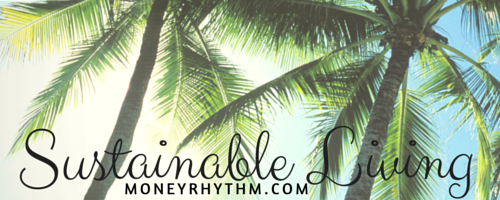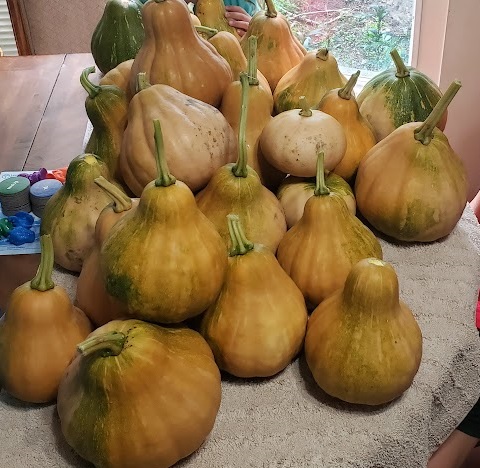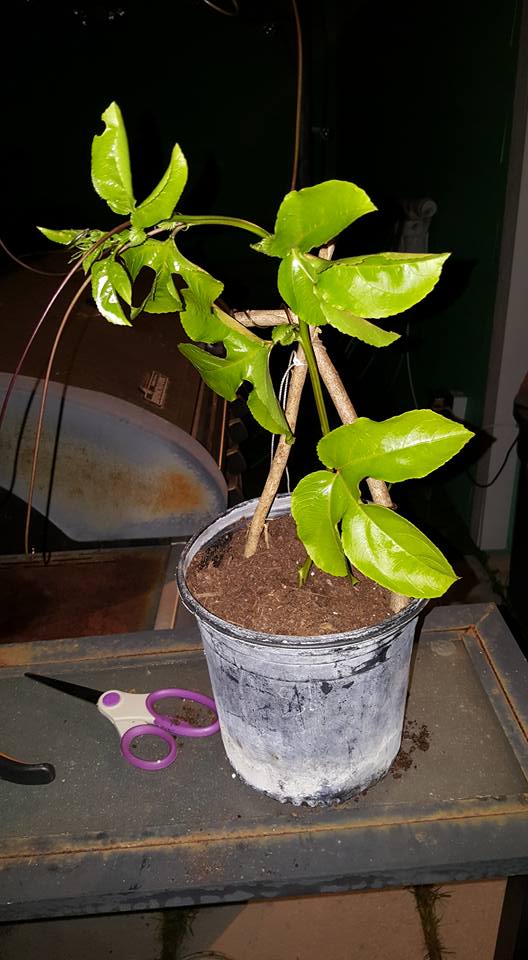Roselle is also called Jamaican Sorrel, Florida Cranberry and officially, Hibiscus Sabdariffa. Grown from seed easily and growing to a large size in one season with a prolific set of fruit, there isnt much bad to say about Roselle. I didn’t know what I had grown until I saw the fruit being sold for $5 a pound at a local market!
Pros of Roselle Florida Cranberry Trees
- Fruit can be left on the tree for extended period of time though eventually bugs will move into the flowers
- Leaves are edible
- Makes absolutely delicious cranberry sauce from the petals of the “flowers” (the Roselle)
- A minimum amount of fertilizer and water will produce a plant much larger than an ignored one
- Can overwinter if temperatures stay above freezing otherwise save seed or grow in a container.

Roselle, Jamaican Sorrel Tree Uses
Leaves and the flowers (Roselle) are edible. The have a great tangy taste which plain tastes nothing like a cranberry. The name Florida Cranberry tree comes from the taste when you cook the roselle (not the leaves) with sugar and a bit of water into cranberry sauce. The result, in my opinon, is better than traditional cranberry sauce and paired or mixed with a bit of greek yogurt and granola makes an awesome parfait.
The tangy leaves can be eaten right off the tree, our kids loved this. Taking and adding a few shredded leaves to a salad can be delicious as well.
A tea can be made from roselle petals and has had studies performed to exam its effect on lowering high blood pressure. It has been show to inhibit the formation of atherosclerosis (cholesterol plaque leading to heart disease). The articles I gleaned this information from had been cited by hundreds of other articles.
Personal Experience
When it comes to Roselle, we just didn’t know what we had grown. Almost every seed I planted sprouted and I planted them across our yard with and without irrigation and fertilization. Fertilized and watered specimens had a larger and more sustained yield.
Our little ones had been begging to eat the leaves for weeks (the trees were small). I was busy with swim season, time went buy, and soon enough we had beautiful roselle blossoms (petals surrounding a seed pod). After a few weeks I remembered to do more research and found all the great things you could do with roselle. I had such a great yield in October from 6 plants that I gave a pound away to my neighbor and brought an entire grocery bag to work (where one of my Jamaican co-workers happily received them).
From then until December our kids harvested and ate and brought to the dinner table for each person roselle every day. I’m not sure at this point (Mid January 2016), whether the plants will come back in the spring or not. I suspect there were hundreds of seeds dropped to the ground that will sprout anew come spring!
We planted one under a tree and it did not do well. These plants like full sun
Propagation of Roselle Hibiscus Sabdariffa Trees
Seeds – Extremely easy to propogate
Future Plans
These will be planted every year if they do not come back, but I hope that they just continue to resprout themselves each year.
Cons of Roselle
- Spiders and bugs like to live in the spaces of the roselle petals if you leave them on the tree for too long
- Difficult to keep alive through winter.
Conclusion
This is a great bush for any food forest.. 5 out ot 5 stars for the ease of raising and using this plant. Have you planted or do you have a great recipe for Jamaican Sorrel? Leave it in the comments below! Explore other fruit trees for a food forest.



